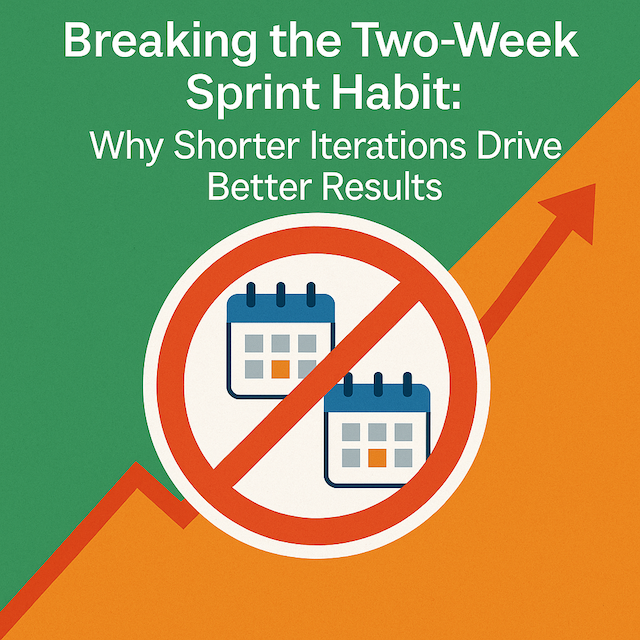Medium
4d
258

Image Credit: Medium
Breaking the Two-Week Sprint Habit: Why Shorter Iterations Drive Better Results
- Many technology organizations operate on two-week sprint cycles, which have become standard but may not be optimal for productivity, customer feedback, and competitive advantage.
- Comfort and predictability in software development can lead to complacency and inefficiency.
- The real question is whether two-week sprints are optimal for a team's goals.
- Evidence suggests that shorter sprint iterations could lead to better outcomes.
- IT leaders need to challenge assumptions about sprint length and consider if shorter iterations could be more effective.
- The Scrum framework allows sprints of one month or less, yet many organizations stick to two-week cycles without questioning their efficiency.
- The prevalence of two-week sprints is more due to convenience rather than rigorous analysis.
- Early Agile adopters found two-week sprints balanced planning overhead and project needs.
- Reevaluating sprint length can lead to improved results.
- Shorter iterations could enhance productivity, feedback loops, and competitiveness for teams.
- It's essential for organizations to analyze whether two-week sprints are the best fit for their objectives.
- Challenging the status quo on sprint length can help drive better outcomes in software development.
- The article emphasizes the importance of examining and potentially changing the frequency of sprint cycles.
- Adopting shorter sprint iterations may offer advantages in efficiency and results.
- IT leaders should consider whether adjusting sprint length could lead to enhanced performance and success.
- Breaking away from the comfort of two-week sprints could potentially drive improved results and innovation.
Read Full Article
15 Likes
For uninterrupted reading, download the app